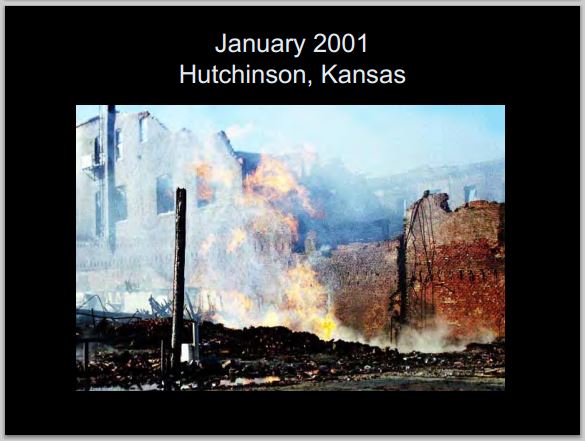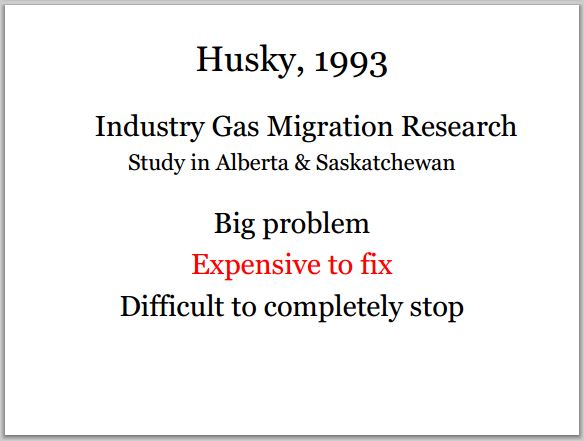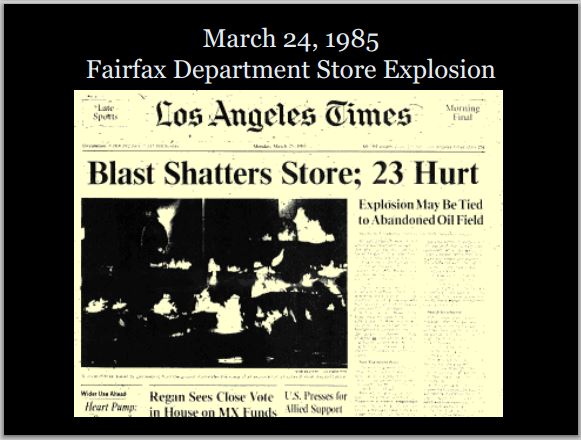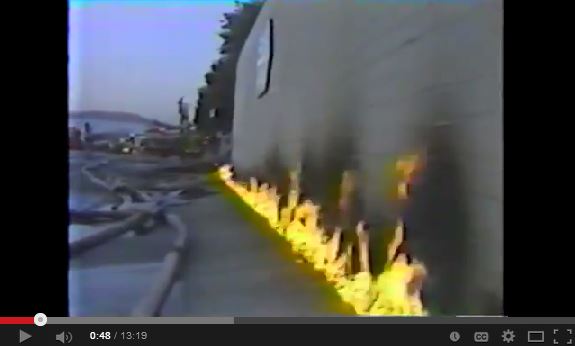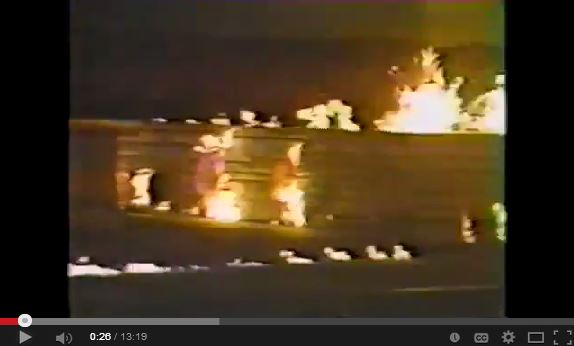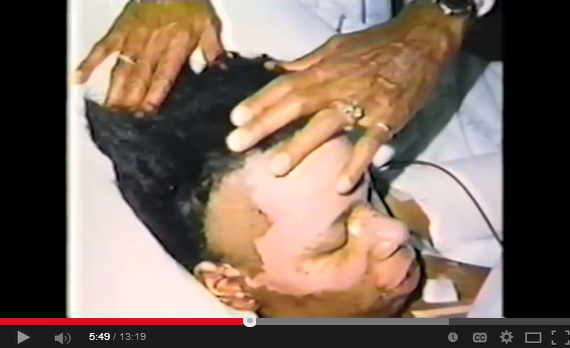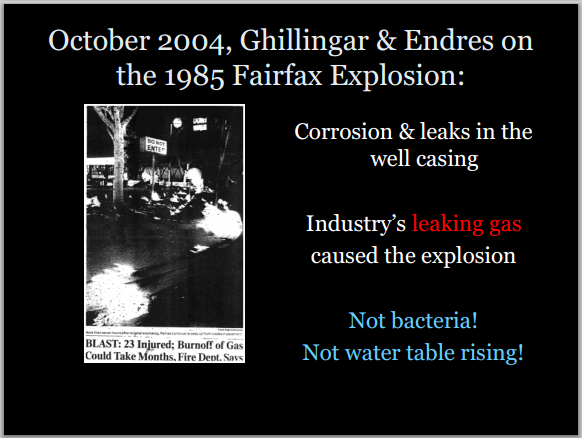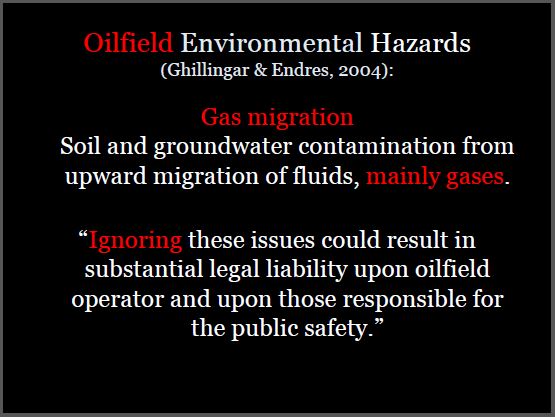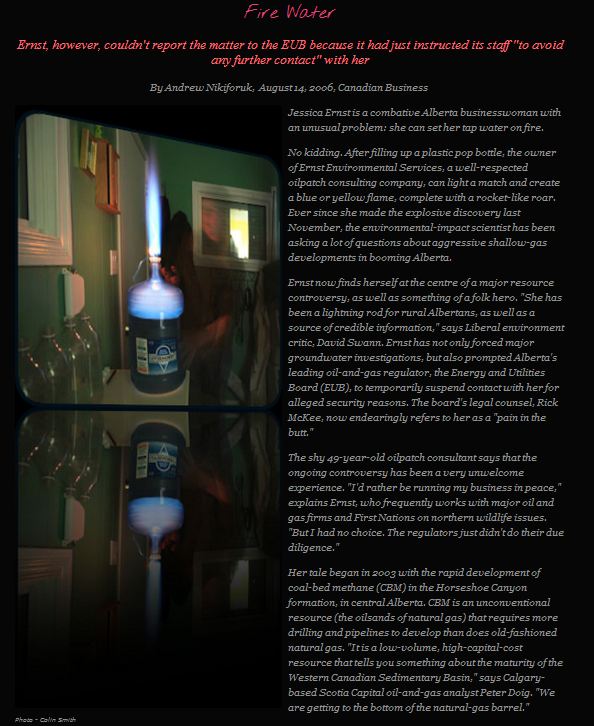St. Albert residents sitting on abandoned oil and gas wells by Viola Pruss, March 16, 2013, St Albert Gazette
Several St. Albert residents whose properties are on or near and abandoned oil and gas wells have been contacted by Imperial Oil about tests to be done on their land. The oil company and Coun. Cam MacKay say the tests are strictly precautionary and that homeowners have no reason to fear for their health or property values.
Chris Harroun, a resident of Acorn Crescent in Akinsdale, received a letter from Imperial Oil this month that said an abandoned well or stratigraphic test well (strat hole) may be located on or near his property. arroun is to meet a company employee on Wednesday to discuss an inspection of his property. “They will meet with us and my neighbours,” he said. “From what I understand, they have to go every square metre and probe for methane and do a little background check.”
Abandoned wells are inactive oil or gas wells that were shut down or cut off one or two metres below the ground.
Strat holes were drilled in the 1940s and 1950s to obtain information on the possible exploitation of gas resources. They were usually less than 500 metres in depth but typically never produced or encountered gas and were quickly abandoned.
Harroun said he is worried that his property will now lose some of its worth, and will be hard to sell to future buyers.
He learned from the Energy Resources Conservation Board website that he is not the only person in St. Albert whose property sits on an abandoned well. Imperial Oil alone has about four or five different sites around town.
“I am just wondering why this was never told to us two or three years ago when we bought this place,” he said.
…
MacKay said there are about 10 to 15 abandoned well sites in St. Albert. A few more are located in farmer fields around the city and in the Kingswood Park area. … “It’s just a precautionary measure. It’s a wise decision by the province to get all the oil companies to go out and check these things,” he said. “But if you can’t smell anything [methane rising to surface or contaminating groundwater has no odour ] and you haven’t had any serious problems … it’s been so long since there’s been oil activity in St. Albert. If you don’t have a problem now you probably never will.”
MacKay said the Alberta government and the ERCB created a program in 2012 directing oil and gas companies to inspect abandoned wells and stratigraphic test wells close to residential, commercial and industrial properties in urban areas. [What about the hundreds of thousands of abandoned wells and stratigraphic test holes in rural Alberta?]
In 2012 Alberta Municipal Affairs also introduced amendments to the Subdivision and Development Regulations. The amendments require developers and property owners applying for a subdivision or development permit to identify the location of abandoned wells during planning and to appropriately address them in the proposed development.
Harroun and his neighbours probably won’t be the only ones who will be contacted, MacKay added. And if the companies don’t find anything, the worth of homes should not be affected. [Not finding leaking methane now doesn’t mean the problem won’t arise in the future]
“What happened in Alberta over the years is that the cities have grown and spread out. They are starting to expand on areas that had old gas well sites and there can be some problems,” he said. “So now the oil and gas companies have to go back and test the integrity of the abandoned wells.”
The letter from Imperial Oil to Harroun said “there is no indication that either (abandoned or stratigraphic test) wells pose any risk to the public.”
“However, to provide assurance for those living or working nearby, the ERCB is initiating a proactive assessment of these wells.”
Anyone looking for more information or a map of abandoned well sites in St. Albert can find these at the Conservation Board’s website (www.ercb.ca) under Directive 079: Surface Development in Proximity to Abandoned Wells.
Editor’s note: In the original version of this story, Coun. Cam MacKay referred to homes exploding in Devon because of an insecure gas well. In fact, the problem was a leaking natural gas well in Calmar. No homes exploded. [But homes were torn down and families relocated at significant stress and loss] [Emphasis added]
[Refer also to:
No reason to fear for one’s health or property?
No risk to the public?
The Ontario Assessment Review Board Reduces Methane Contaminated Property’s Taxation Value to Zero
The science is deafening: Industry’s gas migration
Imperial Oil wants Alberta Court of Queen’s Bench to dismiss Bilozer lawsuit over pollution claim
Imperial Oil shown the door in dispute with Bilozers over contaminated land between Calmar and Devon
‘They aren’t going to beat us’: Angry landowner locked in 40-year dispute with Imperial Oil
Mountain View County will inform residents about new abandoned energy well rules
Province may change well setback rules
Calmar residents know the drill as company works to cap abandoned well
Calmar Homeowners Suing Town of Calmar and Aztec Home Sales Inc over Leaking Wells
Imperial Oil leaking natural gas wells a nightmare for homeowners near Edmonton
Leaking gas well forces families out in Calmar neighbourhood
Bainbridge County, Ohio: Methane released by hydraulic fracturing on an Ohio Valley Energy well entered groundwater, water wells and subsequently into the home of Richard and Thelma Payne causing an explosion and significant damage. It took three years for the company to settle with the 43 harmed households, including paying off Nationwide Insurance which had coverage on the Payne’s home.
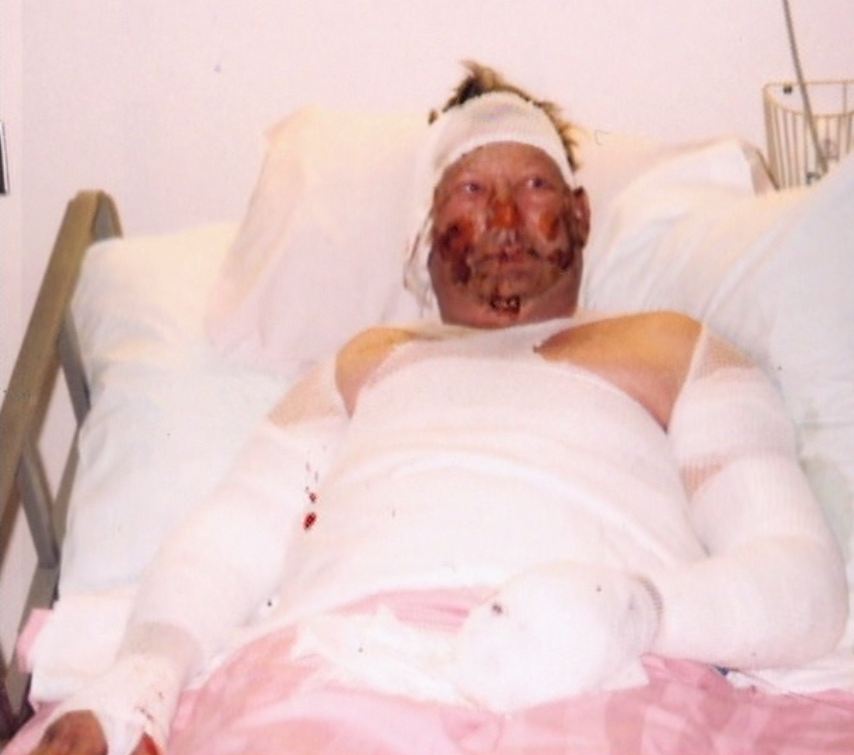 May 2006: Bruce Jack from Spirit River, Alberta, in hospital the day his methane contaminated well water exploded. Two industry gas-in-water testers were also seriously injured and hospitalized.
May 2006: Bruce Jack from Spirit River, Alberta, in hospital the day his methane contaminated well water exploded. Two industry gas-in-water testers were also seriously injured and hospitalized.
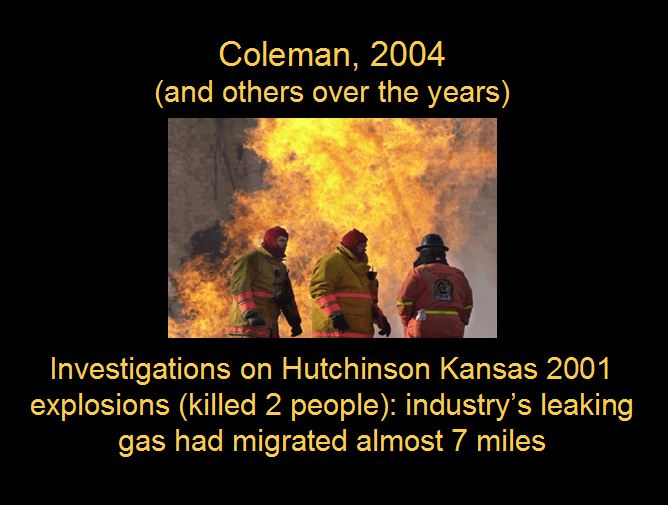 Slides above and below from Ernst presentations
Slides above and below from Ernst presentations
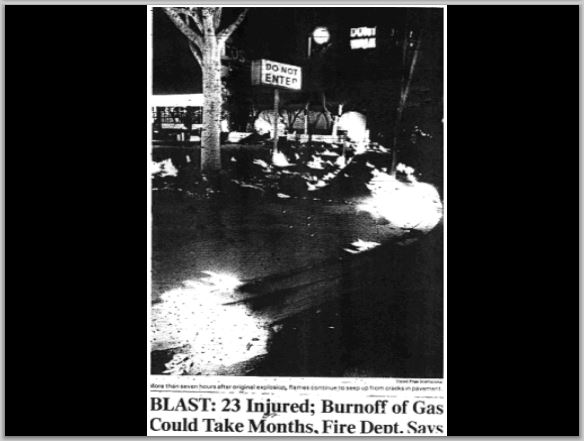 Screen grabs below from Oil Well Leaking Methane Gas Causes “Ross Dress for Less” Explosion Video
Screen grabs below from Oil Well Leaking Methane Gas Causes “Ross Dress for Less” Explosion Video
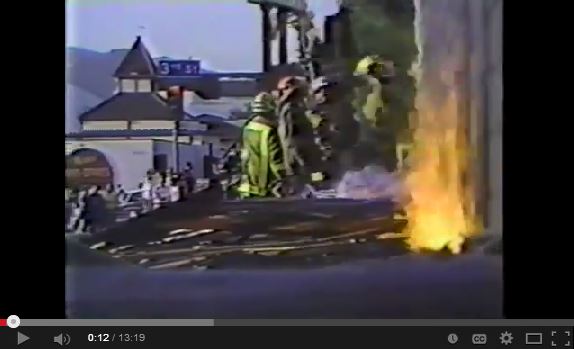 Screen grabs below of Benita Harris
Screen grabs below of Benita Harris
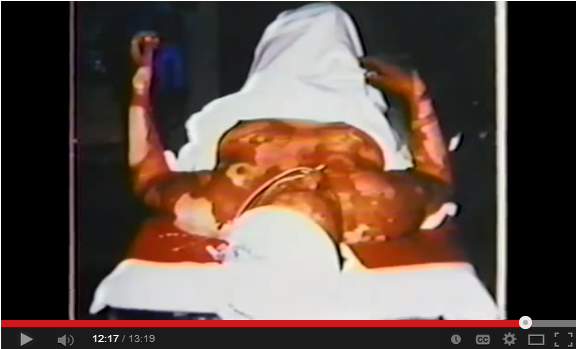 More than 20-30 stores were evacuated because of risk of explosion from industry’s leaking methane.
More than 20-30 stores were evacuated because of risk of explosion from industry’s leaking methane.
“We’re getting very high readings along the perimeter of the bank.”
“The blast forced the immediate closing of over 100 small shops for nearly a week. In the weeks that followed, thousands of daily customers were kept away by the potential of more explosions and the closure of a number of streets in the immediate area”
Above snap from FrackingCanada

